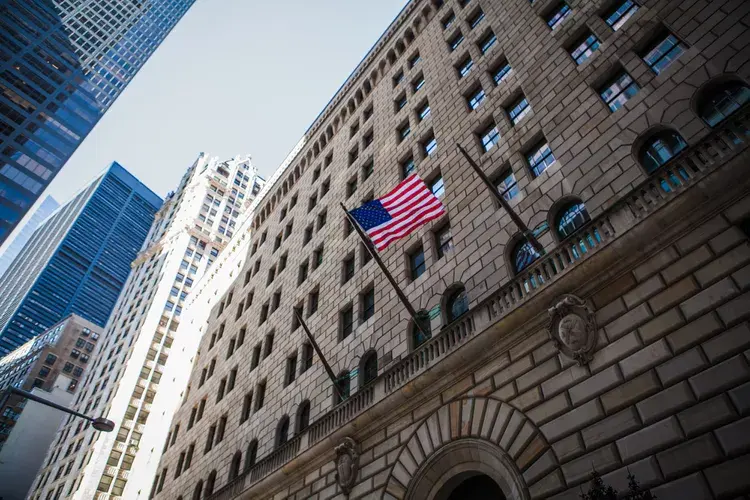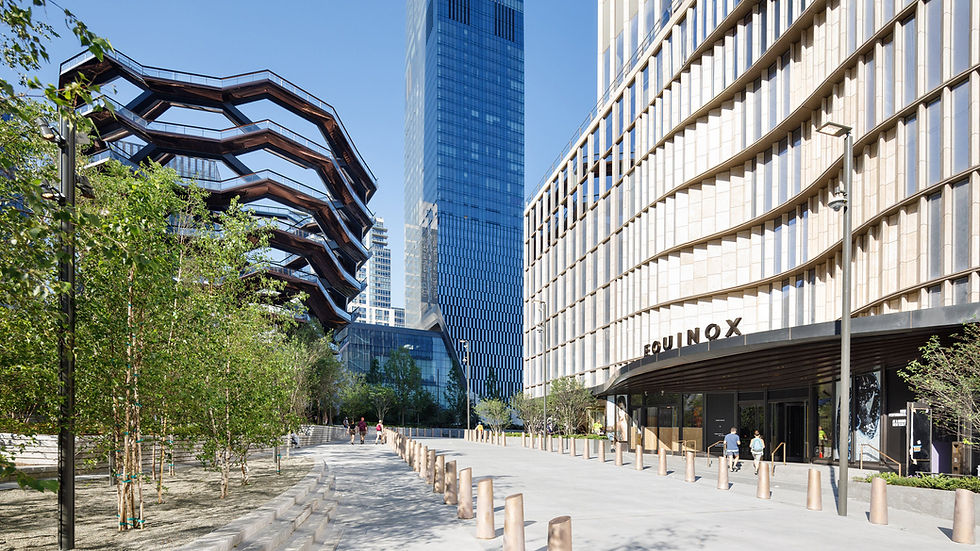Weekly Market Report - November 28, 2022
- Norman Bobrow

- Nov 28, 2022
- 5 min read
***
Inking deals at $200 per foot has become the old $100 per foot, while $300 per foot has been achieved at both One Vanderbilt and L+L Holding’s 425 Park Ave. which officially opens today. 16 deals over 100,000 square feet were closed in Q3 compared to 11 deals in Q2. With 25 million square feet signed already, 2022 will surpass last year’s 26 million square feet of leases. Recent large commitments to new buildings include KPMG and D. E. Shaw leased 456,000 square feet and 283,421 square feet, respectively, both at Brookfield’s upcoming Two Manhattan West.
Franklin Templeton inked a deal for 347,000 square feet on the high floors of SL Green Realty Corp. 's upcoming reinvention of One Madison Ave. at a reported $145 per square foot in a project that already snagged IBM for 328,000 square feet and Chelsea Piers Fitness for 56,000 square feet. To wit, on the east side of Grand Central Terminal, TF Cornerstone is planning a jumbo 2 million-square-foot tower at 175 Park Ave. with offices and a Hyatt brand hotel. Brokers say Blackstone is contemplating 1 million square feet of its glass and steel space.
***
Facing inflated prices most everywhere they turn, commercial buildings are placing greater focus on energy efficiency, looking at utility bills to offset rising expenses. Doubling down on efforts to reduce consumption and improve efficiency makes sense, “but it’s a tricky time to try and reduce costs while simultaneously keeping employees – who just recently got back to the office on a regular basis – happy and productive.
Offices are busier now than at any stage since the COVID-19 pandemic.” Hannah Dwyer, EMEA head of work dynamics research and strategy said the onset of hybrid schedules adds to the challenges building engineers are facing. They must make office spaces “more fit-for-purpose, at a time when budgets are under pressure,” Dwyer said. Other areas being targeted include lighting and keeping up with servicing. Betts says companies are accelerating efforts, removing surplus lamps, using LED bulbs, cleaning equipment regularly, and making sure sensors are working properly as straightforward steps that can make a big difference.
Anastasia Istratova, vice president, The Climate Technology Investment Team at Fifth Wall, tells GlobeSt.com that technologies can be “easily implemented in standard maintenance repair cycles and with advantageous payback periods are becoming something of a no-brainer for real estate operators.”
***
With the pandemic receding, children back in school and businesses telling employees to return to the office, the companies that own big office buildings were hoping to move on this fall from a nightmarish two years. Instead, things got worse. More office workers are back at their desks than a year ago, but attendance at office buildings in New York, Boston, Atlanta, San Francisco and other cities is languishing well below pre-pandemic levels. As leases come up for renewal, companies are often opting for smaller offices, saddling landlords with millions of square feet in vacant space. And more space is expected to hit the market in the coming months as companies like Meta, Salesforce and Lyft lay off workers.
More than 100,000 technology workers have lost their jobs this year. Higher interest rates are also weighing on the industry. Many landlords are no longer willing or able to acquire and spruce up older buildings or build new ones. Seeing little upside in holding on to sparsely occupied buildings and paying interest on mortgages, some landlords are handing over properties to lenders. Others are seeking to convert office buildings into residential complexes, though that can be expensive and take years. Wall Street investors appear to think the office space sector is in for a deep slump. The shares of large landlords and developers are trading close to or below their pandemic lows, underperforming the broader stock market by a huge margin. Some bonds backed by office loans are showing signs of stress.
***
The size of the professionally managed global real estate investment market surged to a whopping $11.4 trillion in 2021, while investors set a global record by completing real estate transactions totaling $2.1 trillion, according to research by Morgan Stanley Capital International. Thanh Bui, a portfolio manager at Clarion Partners, a private real estate investor, observed at a November 2 Franklin Templeton webinar, “Real estate has historically performed well in periods of inflation and could be a good hedge, as favorable supply and demand market conditions allow for landlords to pass costs along to tenants in the form of higher rents.”
The value of real estate tends to either remain stable or increase in the long run. The Dow Jones U.S. Real Estate Index, an index designed to track the performance of real estate investment trusts (REIT) and other companies that invest directly or indirectly in real estate through development, management, or ownership, including property agencies, had an annualized 7.34% total return over the past decade. Addressing the rising rates and forecasted slower economic growth globally, Neil Cable, head of European real estate investments at Fidelity International, at the MSCI Real Asset Conference said, “Consensus in the market is that significant headwinds lie ahead,” said Neil Cable, head of European real estate investments at Fidelity International, when addressing rising interest rates at the MSCI Real Asset Conference on November 3. “[Though] in this cycle, repricing of assets could come more quickly than in past cycles due to a larger diversity of risk appetites and more global players in the overall investment market.”
***
Manhattan is back in the New York groove in terms of being the top U.S. commercial real estate market for international investors a year after falling to third place and despite headwinds in the office market. A recent report showed that Manhattan was once again in the No. 1 spot in foreign CRE international activity with a 279 percent increase in the first six months of 2022 compared with the prior four quarters.
In 2021, the Big Apple slipped to third place behind Atlanta and Boston as investors grappled with concerns about the future of office properties amid rising vacancies and remote work trends. Those uncertainties remain, but a number of international players have planted flags in New York this year. Manhattan cross-border CRE volume was at $1.14 billion in the first half of 2022, largely from Asia and Europe, according to MSCI. Last year’s total global activity for Manhattan numbered $3.78 billion, with a big uptick in the second half of the year as the economy opened up more from pandemic restrictions. Costello noted that much of the international activity in Manhattan this year has centered around the multifamily market, including Korean firm Eugene Asset Management’s acquisition of the 20-story 251-257 West 94th Street for $266 million from Related Companies in the second quarter. But there were still some big office acquisitions. These included Australia’s Macquarie Asset Management buying 375 West Broadway, a Class B building in SoHo built in 1900.
Part of the global investment away from the New York has stemmed, Costello said, from heavy interest in the industrial sector, which Manhattan lacks. This opens doors to other markets, especially in areas of the Southern U.S. such as Dallas. International investments in New York slowed in the third quarter of 2022 as the debt markets began to freeze up on the heels of the Federal Reserve beginning its hawkish strategy of raising interest rate hikes to combat inflation. There were still some large deals in that quarter, though, including Spain-based Ponte Gadea purchasing a 483-unit multifamily property at 114 Fulton Street in the Financial District for $487.5 million in September.









Comments